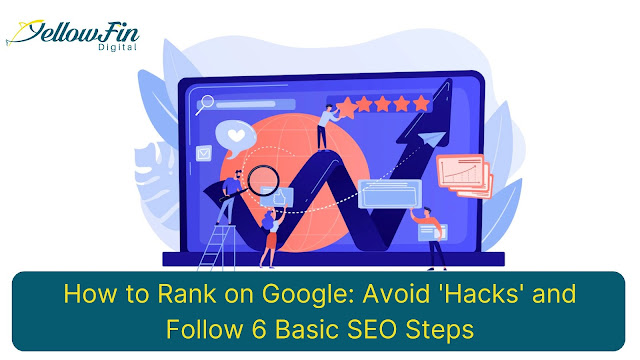Engage More, Scroll Less: The Power of Scannable Website Design
The rise of the digital age has significantly changed how businesses communicate with their customers and attract new ones. Nowadays, websites have become the primary source of information, and people tend to consume them much faster. The web design company in Houston acknowledges the significance of developing a visually appealing and user-friendly website.
In today's fast-paced digital world, people often scan website content rather than read it thoroughly. This is why scannable website design is important. It's essential to make a website that's easy to scan so that users can easily find the information they need and stay interested in your brand. The article explains how scannable website design can benefit your online presence and discusses its advantages.
Top 7 Ways to Design a Scannable Webpage?
1. Identify the Purpose of the Webpage
To make a web page easy to read through at a glance, first, establish its objective. What do you want visitors to do when they access the page? Do you want them to buy a product, sign up for a newsletter, or peruse an article? After you've narrowed the page's aim, structure the arrangement and information to achieve that final aim. For instance, if you aim to have users register for a newsletter, place the signup form front and center on the page.
2. Highlight the Content
Highlighting text sections and providing visual cues will help users quickly find the necessary information. Using bold, italicized, or underlined texts can make certain areas easier to read and draw attention to them. You can also use color to highlight important words or sentences to guide readers through your content.
To make a web page scannable, it's best to keep a simple and clean design. A neutral background color should bring visual focus to the content if your web page primarily features imagery.
3. Use Headings and Subheadings
Using clear and concise headings and subheadings is important for making content easier to read and scan. When creating headings, ensure they accurately reflect the content they introduce. Headings impact readability and contribute to accessibility, especially for visually impaired users who rely on screen readers.
Visually impaired users can navigate a web page quickly and easily with headings. A screen reader can benefit visually impaired users by providing a more efficient and pleasant browsing experience. The screen reader will read the headings of a web page in order, allowing users to save time. This enables users to quickly identify the section of the page they want and bypass any unnecessary content.
4. Fonts should be Easy to Read
Fonts should be kept to two at the most, focusing on readability. Houston web design company recommends using legible fonts consistently across all website pages. It's best to stick to one font family but vary the headings, subheadings, and body text styles.
This helps headlines or shorter sentences to stand out, and using sans-serif fonts makes the letters appear more distinct. For longer texts, like novels or articles, people usually find it easier to read serif fonts as they are more comfortable to read for extended periods.
5. Use Bullet Points and Lists for Organization
When it comes to website design in Houston, one key aspect to remember is readability and navigation. It's important to use concise text to help users find the information they need easily. Instead, consider incorporating bullet points and lists to break the content into smaller, more digestible pieces.
This will help users quickly scan the content and locate the necessary information. Keep the bullet points concise and consistent in formatting to ensure maximum effectiveness. By employing these design elements, you can improve the overall user experience on your website and enhance engagement with your brand.
6. Optimize for Mobile
Make sure your website is designed to be mobile responsive, considering the rising number of people who use their phones to access the internet. This includes optimizing your site to work well on smaller screens and making your content easy to read and interact with on all sizes of mobile devices.
7. Use more White Space to Increase the Readability
White space refers to the empty area between elements on a page. Websites incorporating white space can facilitate scanning by creating a neat, uncluttered design that helps users concentrate on the content.
Apple's website uses a minimalist style with plenty of white space to promote its products and encourage users to explore them. Large, high-quality images with white space around them are used to display products and make the site look visually attractive.
Related Posts: Why It’s Important To Have A Good Homepage Design
The Bottom Line
Readers can quickly identify the information they seek by keeping the content scannable and easy to read. Following the tips above can help create a better website user experience and boost brand engagement. Contact an experienced web design agency in Houston for more advice on scannable website design.
With their expertise, they can provide solutions customized to meet your unique needs. This will ensure that website visitors can easily find the information they need and have a pleasant experience.




Comments
Post a Comment